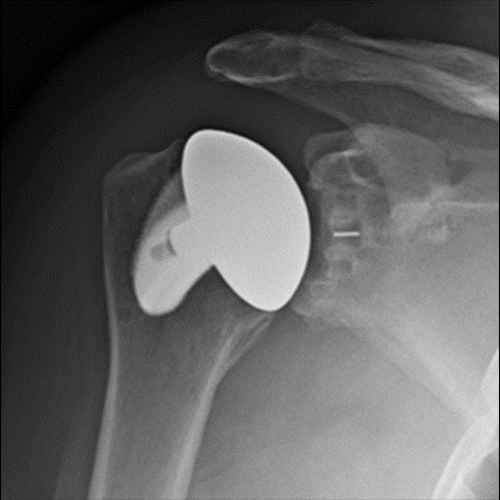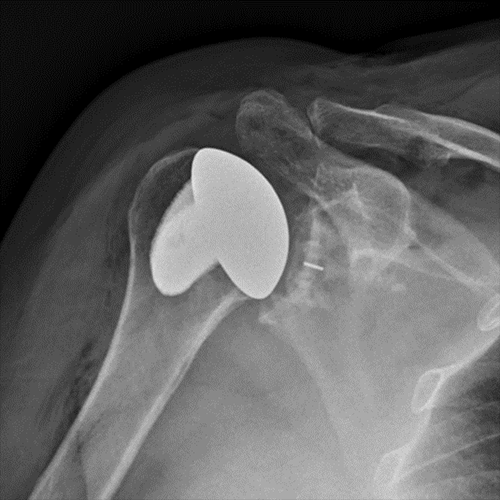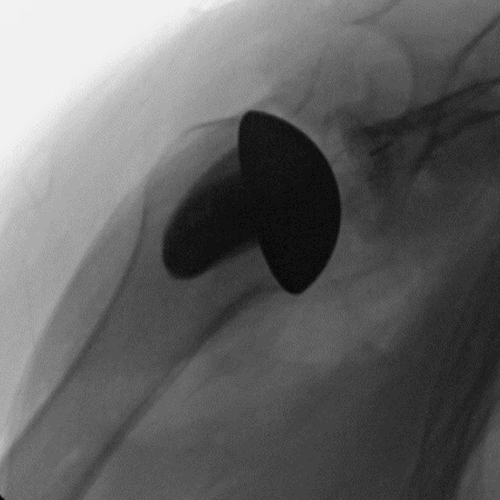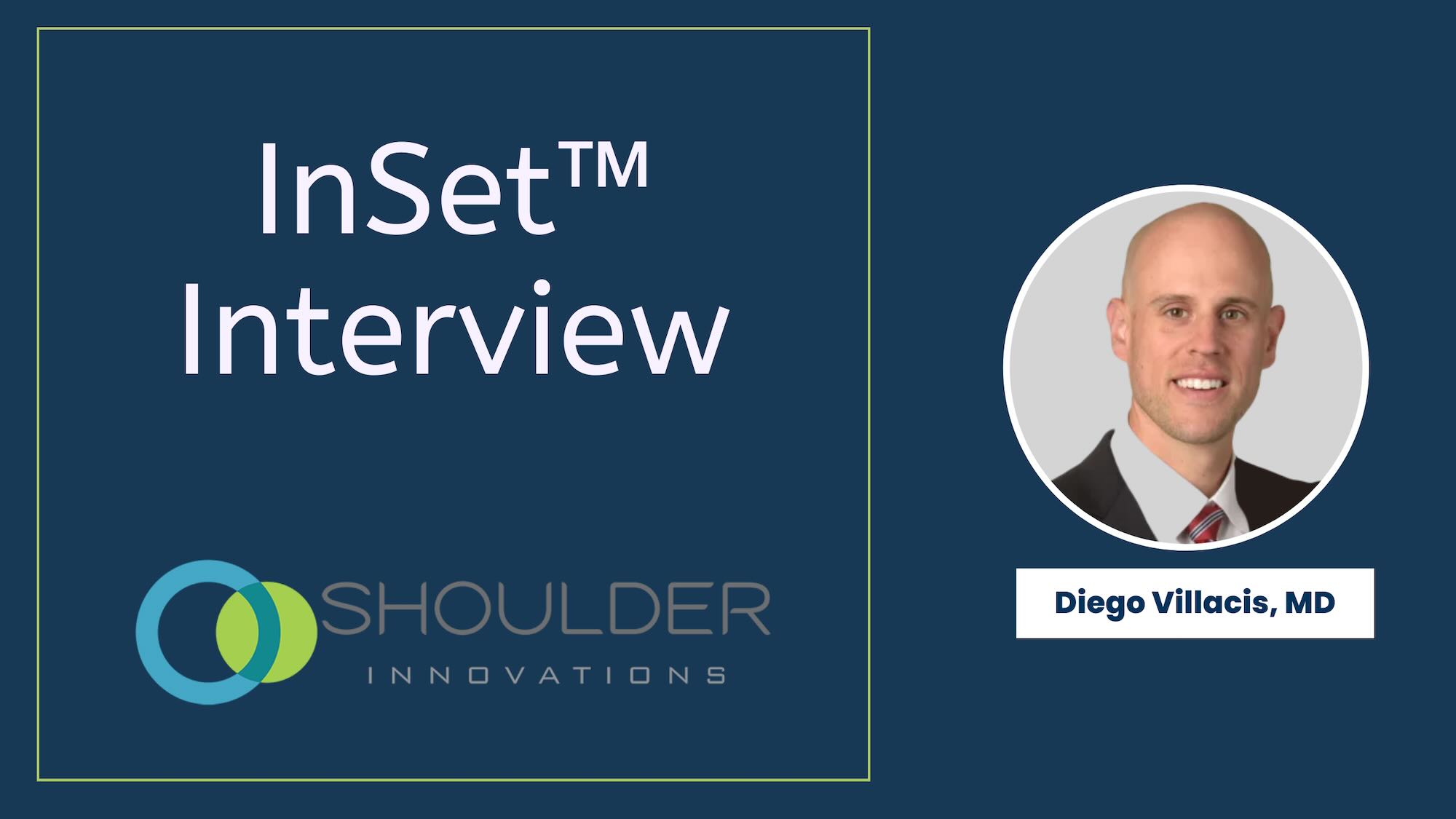We recently had the opportunity to interview Dr. Diego Villacis and learn more about his background and experiences using InSet™ Systems from Shoulder Innovations in his practice as an orthopedic surgeon.
An edited version of our interview led by David Blue follows.
David Blue:
Thank you for joining us today. Would you please share your background, including how you became involved in healthcare and specifically orthopedics?
Dr. Diego Villacis:
Both of my parents were in design and construction, so I grew up on job sites and did a lot of carpentry at home. I’ve always enjoyed working with my hands. Combining this with my interest in science and biology, and wanting to make a difference in people’s lives, naturally led me to orthopedic surgery and the desire to become a physician.
David Blue:
What attracted you to shoulder as a sub-specialty?
Dr. Diego Villacis:
My passion for shoulder surgery was really influenced by mentors. Like many, seeing someone you admire makes you want to follow in their footsteps, which drew me to specialize in shoulder and elbow surgery.
David Blue:
How long have you been using the InSet™ system, and how did you become familiar with it?
Dr. Diego Villacis:
I’ve actually been using the InSet™ since 2017. I was fortunate enough to hear Dr. Chris Chuinard talk about his experience with the InSet™ glenoid, which gave me an “aha” moment — it just made so much sense. It was a major shift for me, as it is for most surgeons. But as I looked more into the science and the logic of how it works, it seemed like something I really wanted to try and explore further.
David Blue:
What are the benefits you’ve recognized in utilizing the InSet™ Shoulder System?
Dr. Diego Villacis:
Early in my career, while performing revisions, I encountered significant bone loss associated with traditional peg or keeled glenoid implants, leaving me with limited options for patient treatment. This realization prompted me to think, “If there’s anything I can do to prevent reaching this point, I definitely want to pursue it.” When I found out about the InSet™ glenoid and saw the increased stability, and longevity of the implant both in biomechanical studies and clinical studies, and just thinking about how it works, I realized this would be a very good option. I started using it mostly on very young patients who I’d normally consider for hemiarthroplasty or total shoulder arthroplasty, expecting they’d soon need a revision. This opened new doors. Finding it easy to use and seeing great clinical results, I expanded its use to older patients. Encouraged by clinical studies showing its longevity, I also began using it for patients with severe deformities, making it my go-to implant for anatomic total shoulder replacement.
David Blue:
If you were sitting down with a fellow surgeon to talk to them about this technology for the very first time, what would you tell them?
Dr. Diego Villacis:
I realize this marks a little bit of a shift, yet if you consider it with an open mind, it really makes sense. In my experience, there’s no discernible difference in pain relief , patients do extremely well. Additionally, it’s actually easier to use, requiring less exposure even in challenging cases with significant deformity. So, it’s beneficial in many ways, achieving excellent clinical results, even in complex cases with increased longevity, and from a technical standpoint, it’s simpler. I usually suggest to surgeons to try it on an uncomplicated case first, with minimal deformity. Often, this makes things click, opening their minds to use it more frequently.
David Blue:
Do you have any tips or pieces of advice that you would give other surgeons if they were using the system for the first time?
Dr. Diego Villacis:
I would say one of the biggest things related to the glenoid is when I first started doing it, I used to place the glenoid more towards the bottom, almost within that natural circle of the glenoid pear. Over time, I’ve noticed that the humerus often prefers to sit a little higher. So, over the years, I’ve started positioning the glenoid closer to the center of the anatomic glenoid, or maybe even slightly above center, altering the north-to-south placement. Another point I share with physicians is my preference for using a smaller implant size now, to ensure a solid rim around the entire polyethylene. This adjustment hasn’t impacted pain relief, instability, or any other concerns, but it does provide confidence in having a secure rim all around.
David Blue:
Have you noticed an impact of the single tray TSA and dual tray RSA setup relative to efficiencies in the OR, as well as cost savings?
Dr. Diego Villacis:
I do get a lot of positive feedback from the scrub techs because they find the system simple and easy to use. Even though I have scrub techs who are very familiar with my technique and systems, I occasionally work with those who aren’t as accustomed to them. It’s nice to have a system that’s reproducible and straightforward for everyone to use, which makes my life much easier. Additionally, the OR leadership appreciates it because it’s more cost-effective to use fewer trays. This also helps keep costs down at our surgical center. So, from both a simplicity and economic standpoint, it’s been a positive experience.
David Blue: Do you have any closing thoughts today?
Dr. Diego Villacis:
I truly believe that in the coming years, people will look back at onlay techniques and wonder why we didn’t make the switch sooner. InSet™ makes a lot of sense when you consider it, and my experience so far with Shoulder Innovations has been very positive.



Dr. Diego Villacis is an Orthopedic Surgeon in Germantown, WI

